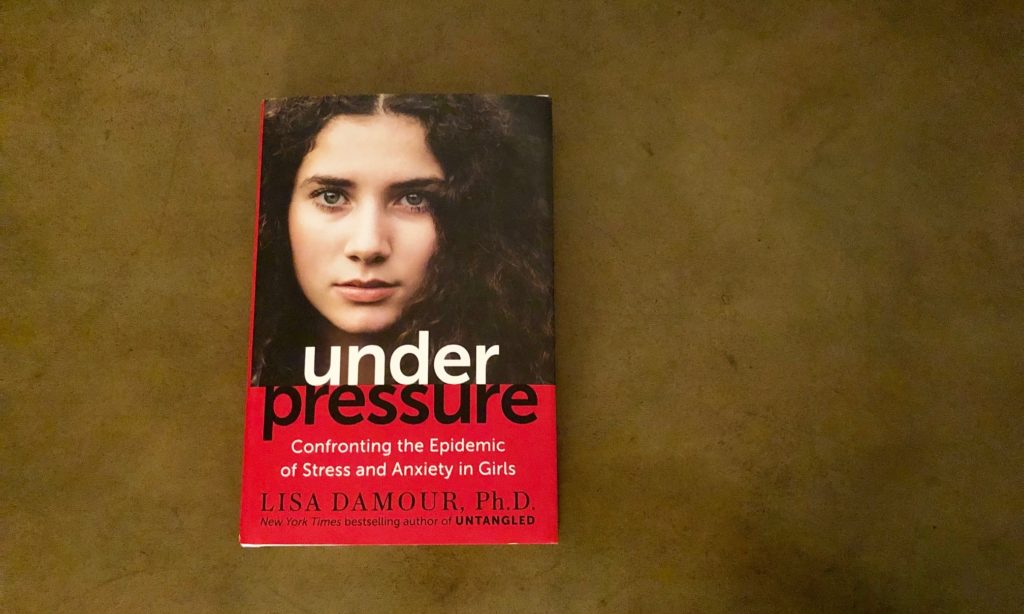Lisa Damour’s new book, Under Pressure, addresses the mental health crisis we are facing in America in which “31% of girls and young women experiences symptoms of anxiety, compared to 13% of young men.” Interestingly, in the face of this and other concerning statistics, Damour chooses an upbeat and constructive approach to addressing the worrying level of girls’ anxiety. Damour encourages parents to consider that there are “reasonable levels of stress” for a young woman to grow “strong and durable” and likens handling stress to weight lifting in which one adds more and more weight over time, building up strength. She emphasizes the importance of teaching kids not to avoid the situations that provoke stress or anxiety because avoidance heightens anxiety, but to help them learn how to move (even in baby steps) toward those situations.
Within this context of believing that stress is not always bad and that we want to move toward (not away from) anxiety-provoking situations, Damour offers several strategies for parents to support teenage girls. Below I highlight three practical and realistic approaches (applicable to everyone, not just to teen girls) to address the varied effects of stress and
anxiety:
Settle the Glitter – Imagine that girls’ brains are like a jar filled with water and glitter. When a girl is emotional, her brain is akin to a glitter jar when it’s been shaken, with the glitter is swimming chaotically all over the jar. Damour’s advice is to let a girl “settle her glitter” i.e. give her time to come down from her elevated state. Avoid immediately asking her questions or offering solutions or even consoling her. Sit quietly with your daughter until she has had time to regroup, maybe offering her a cup of tea, and then seeing if she’s ready to talk about the issue.
Stinks and Handle – In her previous book, Untangled, Damour offers priceless advice about how our teenagers need to dump their problems on their parents (often via text) in order to get on with the business of their day. She adds a useful script to help support our kids when they come home with complaints. She suggests a two part statement, one part acknowledging that what they’re feeling is not trivial (even if it seems like it to us) by saying something like: “Oh, that stinks,” and the second part involves communicating our belief that they can manage the problem by saying something like, “but I think you can handle it.”
Acknowledge First Reactions – Damour wants parents to work with and not against their children’s inborn traits and recognize that for some kids new situations can be uncomfortable and even anxiety-provoking. She encourages us to help kids move past their initial response by recognizing that their first reaction to a situation is not the only reaction they will have. Damour recommends approaching a first response
(like discomfort, tentativeness, anxiety) with curiosity and then waiting it out to see what the second and third responses might be (engagement, calmness, interest.)
I have already put all three of these strategies to work with myself, my own children and with the girls I coach at Dynamo Girl. They have been game-changing in a short time. I recommend reading her books for more practical insights and advice.

